I recently purchased a Spectral DMC-10 based on some of the posts I found here, and the fact that circuit schematics were available for this particular model. The sonic performance of this pre-amp is well revered, and I wanted a Class A discrete design that was simple, relatively low cost, but still capable of producing high performance. I am a tweaker at heart, so I can rarely buy something without giving it a once over and making improvements where I can. Although the design is quite good, there are some aspects that can be improved upon to make it better. Here is the summary of what I found for improvements.
1) Power supply.
The power supply for the DMC-10 is comprised of two sections. An AC transformer with a single pair of output windings in a remote chassis, and the DC rectifiers and filter capacitors in the preamp chassis (along with the low level preamp phono circuits). This is a major compromise in the design. Firstly, they run AC power to the amplifier chassis instead of filtered DC, which introduces AC noise into the low level signals. Secondly, since the transformer has only two output windings, to produce two separate V+/V- power supplies (one for Left Channel, one for Right Channel), they can only half wave rectify, which results in significant AC ripple and noise in the DC supply. There is also no ground reference from the AC supply, so this may potentially cause a safety issue if the amplifier chassis is not earth grounded via another means. My solution was to build another power supply that used two independent torroidal transformers, and supply two independent DC supplies from the remote chassis. More on this supply below.
2) Replace/upgrade the onboard filter caps and bypassing caps
3) Upgrade the voltage regulators. My unit is an early Alpha build, so some of these mods may not apply to later versions. On my unit the negative voltage regulators were 7905 series instead of the 337 series used in later models (which are the true match for the 317 positive regulators), so I replaced the 7905 with proper 337 parts. I also upgraded the heat sinks to longer versions. Spectral used some 400 ohm resistors to bypass the regulators (not sure why), and I removed these because they can "feed forward" power supply noise downsteam to the regulated voltages.
4) Replace unshielded phono wiring with shielded, twisted pair wiring from the RCA input jacks. On Alpha version Spectral ran unshielded wire from the RCA jacks to the PC board. Later versions ran PC traces directly to the jacks, with short wire connections (as with the other inputs). This exposed wiring (along with the AC from the transformer) was a significant source of hum in my amp, especially at higher gains.
5) Replace the polypro coupling caps. In the Alpha version, Spectral used what appear to be Plessey white box polypro coupling caps ( 2 x 4.7 mfd/ch) at the output of the phono stage and at the output of the preamp. In later versions, they replaced the phono stage output caps with in house packaged units (marked with their logo), but kept the white box coupling caps at the output. My suggested mod is to place both sets with 20 mfd WIMA polypro film caps. Turns out the mounting pin spacing for these caps was an identical fit to the OEM versions.
6) Replace the volume Alps pot with Arn Rotecap's Gold Point precision attenuators. My preference here, as I had a spare Gold Point 8K attenuator sitting around, and I have always preferred these discrete precision attenuators to any potentiometer. The original Alps pot had some noise issues, probably due to its age, and the Goldpoint is completely silent.
7) Replace the electrolytic caps in the protection circuitry with film caps. The protection circuit in this amp looks for RF and DC voltages. The filter caps are critical in the operation of this circuit. The bad news is the protection circuit has a relay that SHORTS the output to ground if a fault is detected, and if activated, may actually destroy the amp by overheating the output MOSFETs and burn resistors. That is why you see some of these units with burned PC boards. I also changed the output resistors to 400 ohms from 100 ohms to reduce any potential damage if this protection circuit is activated.
8) Replace the op amps on the tape output buffers. Spectral originally spec'd TL072 opamps for the tape output buffers. These are really poor performing opamps (OK back in the early 80's I guess). I have upgraded my unit with modern OPA627 high speed opamps more befitting the current performance of the DMC-10. However, one must be cognizant of the PS voltages, as the 627 (or the TL072 for that matter) have a MAXIMUM rating of +/- 18 volts. My DMC-10 exceeded that so I had to reduce the supply rails to +/- 17.5 volts.
9) Replace the bias current pots with multi-turn trimmers for more precise control
10) Replace the gain adjustment pot in the output buffer amp with a precision fixed resistor. I don't like pots in feedback loops, as Spectral has done to vary output buffer gain.
Here are some photos of my unit prior to mods:
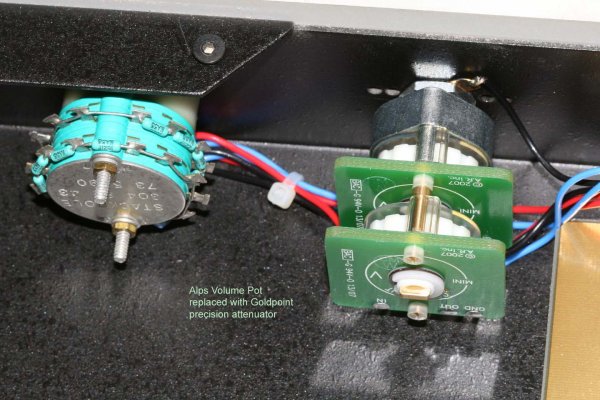
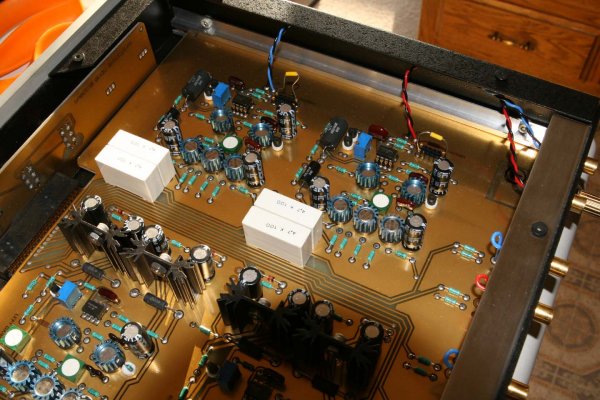
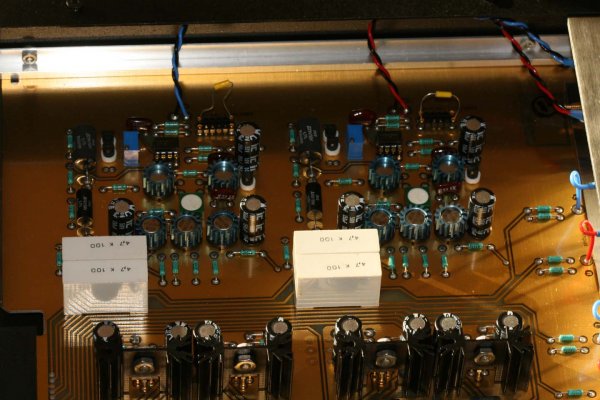
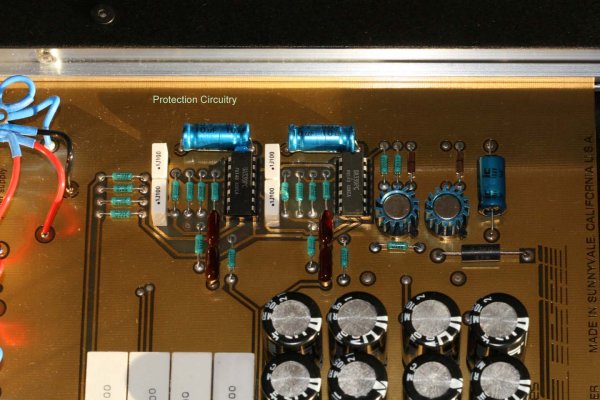
Photos of the modded DMC-10:
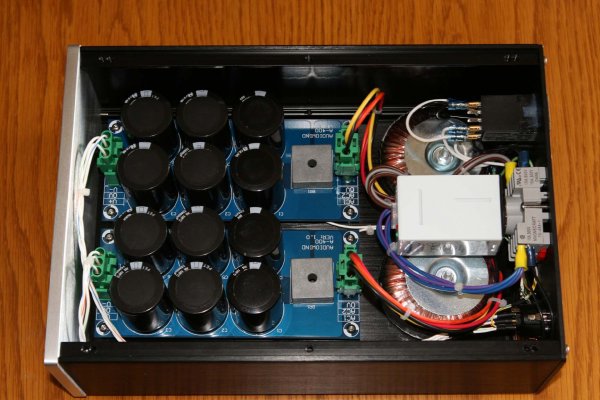
Power supply chassis.
The new supply is two complete supplies, each with its own torroidal transformer, separate ground, and 90,000 mfd of filter capacitance. The white box in the picture is a time delay relay to soften turn on transients.
See part 2 for more photos

